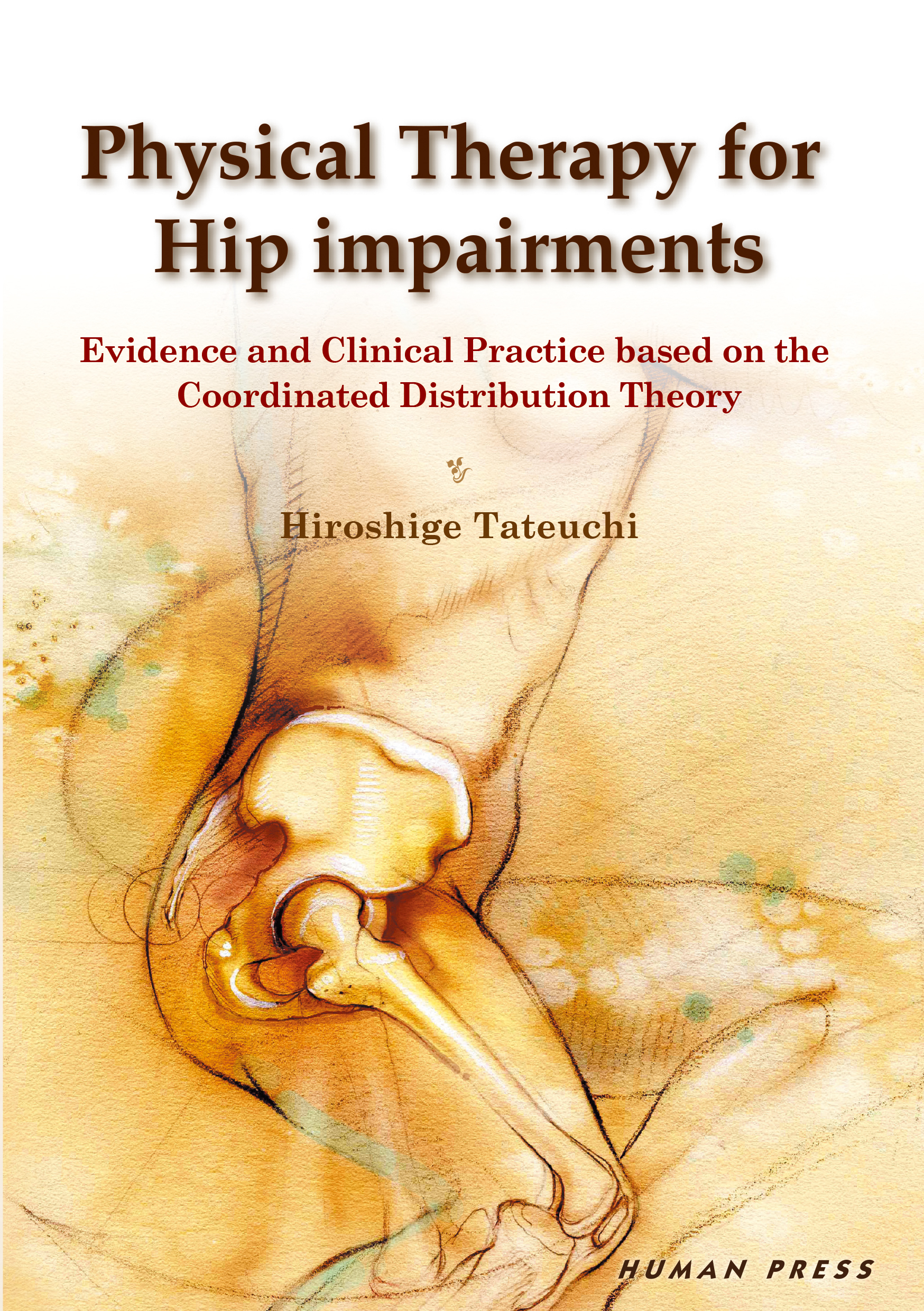Physical Therapy for Hip impairments

- Author
- :Hiroshige Tateuchi
- 288 pages
- ISBN13
- :978-4-908933-51-6
- Price
- :JPY6,000- + tax
Product Description
The key to treating and preventing musculoskeletal dysfunctions lies in the "Coordinated Distribution Theory." In many cases, the root cause of tissue damage and symptom development is abnormal or excessive mechanical stress concentrated in a specific area. Addressing this underlying imbalance is essential to effective intervention.
This book focuses on the evaluation and treatment of hip impairments, exploring the hip as a complex and fascinating joint that closely interacts with the spine, knee, and foot/ankle. It offers valuable insights not only for specialists and researchers working with hip disorders but also for all clinicians involved in managing musculoskeletal conditions.
The table of contents
- Section1 Morphology and positional relationship between the femur and the acetabulum“congruent plane of the hip joint”
- Section2 Coordination and distribution among the femur, acetabulum(pelvis), and spine“coordinated distribution theory”
- Section1 Coordination and distribution in the capsular ligament and labrum“role of the joint capsular ligament”
- Section2 Coordination and distribution among the bone, capsular ligament,and labrum“compensation and impairment of soft tissues caused by bone morphological abnormalities”
- Section1 Neutral position of the hip joint “neutral position and its functional significance”
- Section2 Action of the hip joint muscles “physiological cross-sectional area and moment arm”
- Section3 Change of the actions of the hip muscles with positional change “positional relationship
- Section4 Structure and Function of the iliocapsularis “contribution to joint stabilization”
- Section5 Coordination and Distribution Among Hip Muscles “short-length isometric exercise”
- Section6 Coordination and distribution between passive and active stabilization systems “attachment between capsular ligaments and muscles”
- Section7 Function of deep hip muscles “as stabilizers and sensors”
- Section8 The influence of bone morphology on hip muscles “shapes of the femur and pelvis alter muscle moment arms”
- Section9 Relationship between tissues around the hip joint and peripheral nerves “entrapment neuropathy”
- Section1 Dysfunction of stabilization mechanism and hip microinstability “kinematics and kinetics”
- Section2 Management of hip microinstability “intervention-oriented evaluation”
- Section1 Roles of the hip joint in standing “coordination between the hips and as a connection between the upper and lower body”
- Section2 The hip joint and the gravity line “the positional relationship between the hip joint center and the gravity line”
- Section3 Coordination and distribution in the hip in standing “behavior of passive/active composite stabilization mechanism”
- Section4 Coordination and distribution among the hip and lower limb, pelvis, and spine in standing “center of gravity and the 9th thoracic vertebra as anchor and two-point rotation control”
- Section5 Changes in standing posture owing to hip diseases/disorders “coordination and distribution within the pelvis and spine”
- Section6 Coordination and distribution among the hip, pelvis, and spine in movement from standing “rhythm among the hips, pelvis, and spine”
- Section7 Standing posture and spinal flexibility and progression of hip OA “disease progression caused by stress concentration”
- Section8 Coordination and distribution among the hip, pelvis, and spine in sitting “functional acetabular inclination”
- Section1 Role of the hip joint in gait “weight acceptance, single-limb support, and swing-limb advancement”
- Section2 Change of gait owing to hip diseases/disorders “increased mechanical stress from the synergistic effects of bone morphology and muscle force”
- Section3 Coordination and distribution in the hip in gait “coordination on intermuscular and passive/active elements”
- Section4 Coordination and distribution among lower limb joints and muscles in gait “coupling and trade-off between the hip and the foot/ankle”
- Section5 Coordination and distribution among the hip, pelvis, and spine in gait “stress distribution by coordination of the hip joint and thoracic spine”
- Section6 Cumulative hip loading in gait and progression of hip osteoarthritis “synergistic effect of gait and physical activity”

